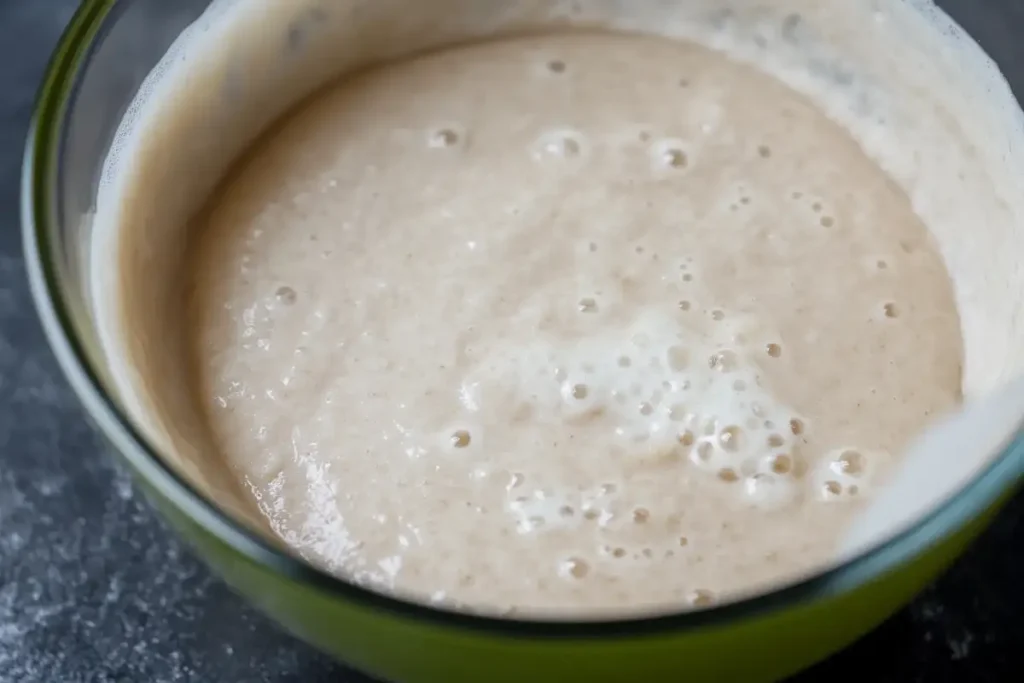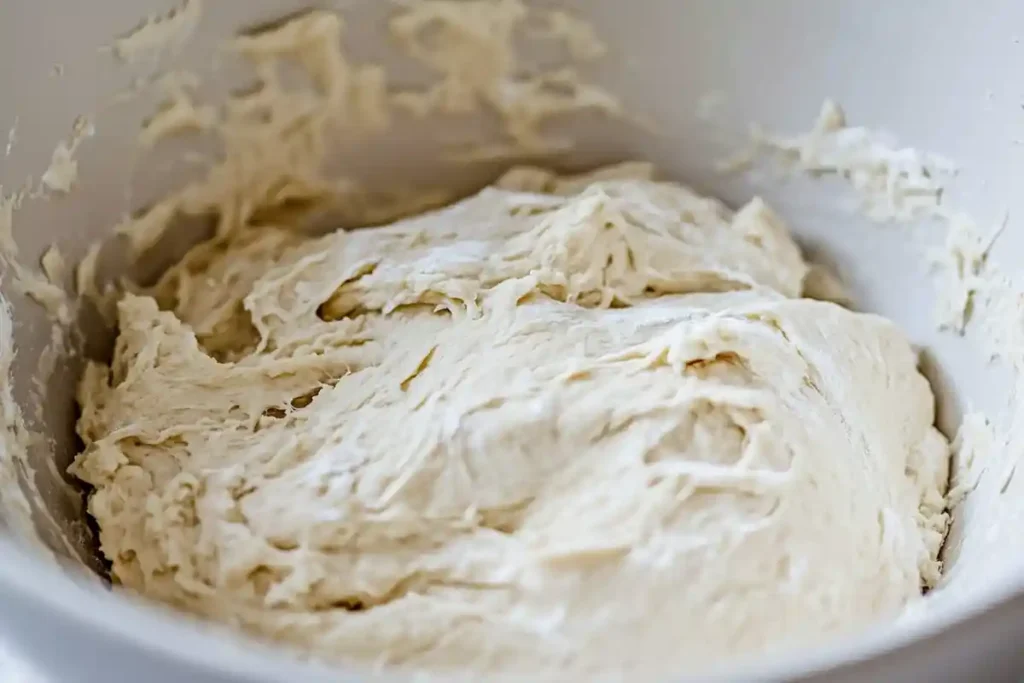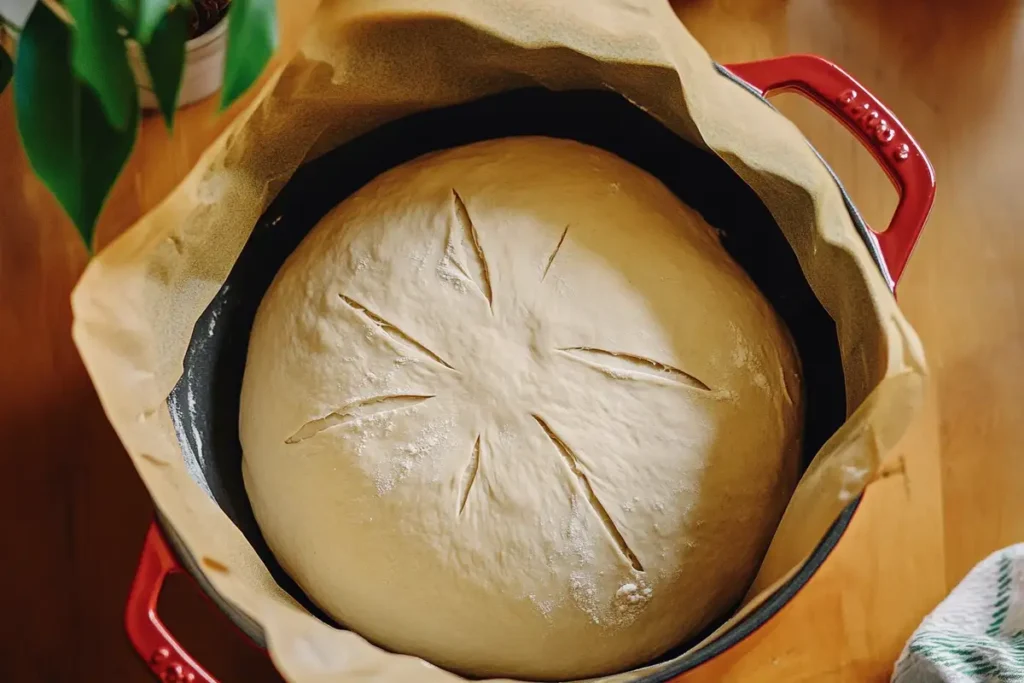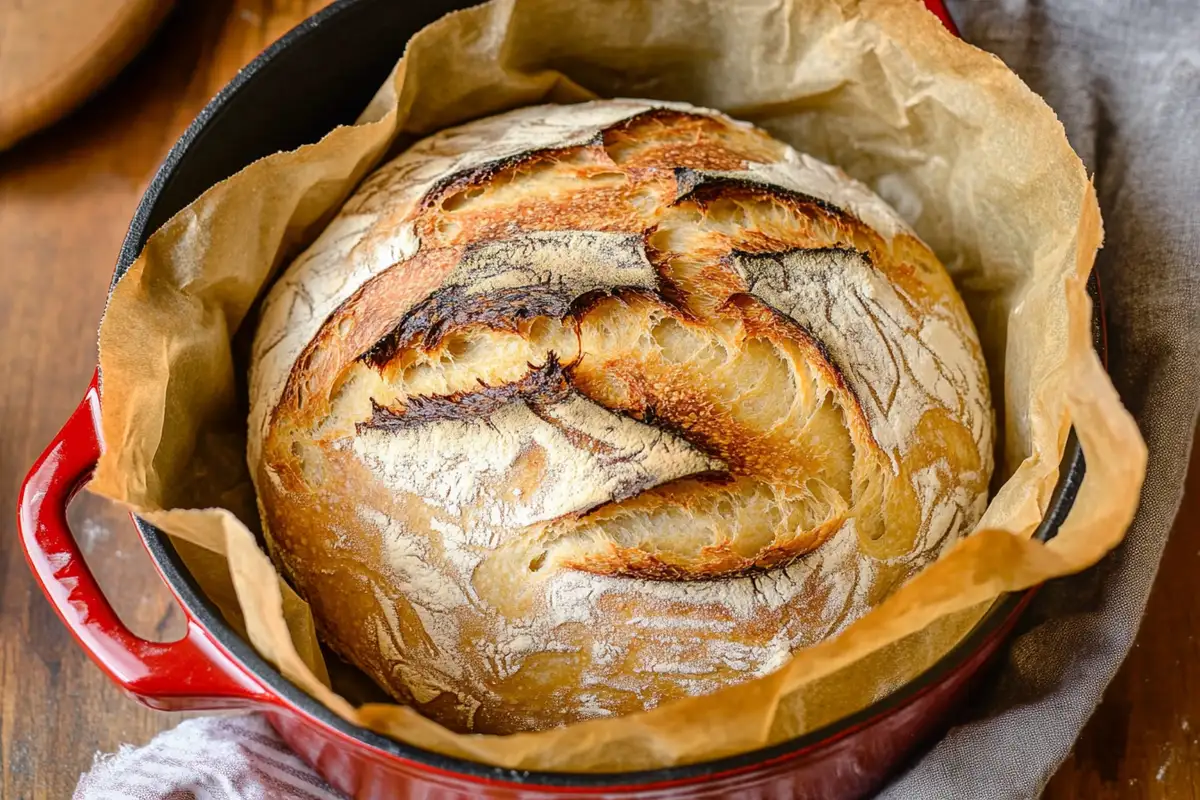Introduction
The art of baking sourdough discard bread is more than just a trend—it’s a sustainable solution to reduce waste while creating mouthwatering, artisanal loaves. Every home baker knows the heartbreak of throwing away perfectly good sourdough starters during routine feedings. But guess what? That discard holds potential! Whether you’re a seasoned baker or just starting, this guide will walk you through everything you need—from understanding what sourdough discard is to mastering the perfect loaf.
This comprehensive guide will explore the history, benefits, recipes, and common mistakes associated with sourdough discard bread. You’ll find practical advice, troubleshooting tips, and answers to frequently asked questions along the way. So, grab your mixing bowl, roll up your sleeves, and let’s turn that discard into something delicious!
Table of Contents
Why is Sourdough Discard Important in Baking?
Throwing away sourdough discard isn’t just wasteful—it’s a missed opportunity. Using discard in recipes isn’t only about minimizing waste; it also enhances flavor, texture, and nutritional value. The fermentation process in sourdough discard creates complex flavors that commercial yeasts can’t replicate.
On top of that, discarding bread is an economical choice. With grocery prices on the rise, every ingredient counts. Reusing sourdough discard reduces environmental impact—making your kitchen a little greener.
If you’ve ever felt guilty about tossing discard into the bin, rest assured: your next loaf of bread is about to taste much better because of it.
History and Tradition of Using Sourdough Discard
Long before modern convenience and commercial yeast packets, bakers relied on natural starters for leavening bread. This traditional method dates back thousands of years, and discard was often repurposed into rustic pancakes, biscuits, or quick breads.
In rural communities, sourdough discard became a kitchen staple, valued for its ability to enrich simple recipes. Nothing went to waste in traditional baking; discarding was often called the “kitchen gold.”
Even today, artisan bakers cherish sourdough discard for its practical uses and its connection to a time-honored tradition of mindful and sustainable baking.
For more historical insights and expert tips, you can explore Master the Art of Sourdough Baking.
Understanding Sourdough Discard

What is Sourdough Discard and Why Do We Have It?
If you’ve ever maintained a sourdough starter, you’ve probably noticed that each feeding requires removing a portion of the starter. That removed portion is known as sourdough discard. But why is this step necessary?
When feeding your starter, discarding ensures that the yeast and bacteria remain balanced, preventing the starter from becoming overly acidic or sluggish. Essentially, it helps maintain a healthy microbial ecosystem. Without regular discarding, your starter could grow too large, dilute the yeast’s activity, or develop off-flavors.
In short, sourdough discard isn’t waste—it’s a byproduct of keeping your starter healthy and active. It’s an incredibly versatile ingredient that can add character to various baked goods.
The Difference Between Sourdough Starter and Sourdough Discard
While both sourdough starter and sourdough discard share the same origins, they serve different purposes in baking.
- Active Starter: This is bubbly, lively, and full of leavening power. It’s typically used for bread recipes requiring a natural rise.
- Discard: On the other hand, discard is older and less active. It may not have enough strength to leaven a loaf, but it still imparts fantastic flavor and texture.
Think of it this way: the starter is the life of the party, while the discard is the seasoned guest who brings wisdom—and flavor—to the table.
The key takeaway? Discard isn’t inferior—it’s just different. Both have their rightful place in your kitchen.
When and How to Collect Sourdough Discard
Timing is everything when it comes to collecting sourdough discard. Typically, discard is collected during regular feedings, which might happen daily or weekly, depending on how often you bake.
Best Practices for Collecting Discards:
- Use clean, airtight containers to store your discard.
- Keep it in the fridge if you’re not planning to use it immediately.
- Avoid letting discard sit out too long, as it can become overly acidic.
When stored properly, sourdough discard can last up to two weeks in the refrigerator. And yes, older discard has a tangier flavor, which can be a great asset in recipes like crackers or pancakes.
Benefits of Baking with Sourdough Discard
Economic and Environmental Benefits
In a world where reducing waste is more critical than ever, baking with sourdough discard is eco-friendly. Instead of tossing out perfectly usable ingredients, bakers can repurpose discard into something delicious and valuable.
Economic Advantages:
- Reduces waste of expensive flour.
- Maximizes the use of existing resources in your kitchen.
- Provides a cost-effective alternative to commercial yeast.
Environmental Impact:
- Lowers food waste sent to landfills.
- Promotes sustainable kitchen habits.
- Encourages resourceful baking practices.
By incorporating sourdough discard into your recipes, you’re not just saving money—you’re also making a positive environmental impact.
Flavor and Texture Benefits of Bread
Here’s where sourdough discard shines: flavor and texture. While discard may not have the rising power of an active starter, it still carries the rich, tangy flavors that sourdough is famous for.
Flavor Profile:
- Tangy and slightly acidic notes.
- Deep, complex flavors unmatched by commercial yeast.
Texture Enhancements:
- Adds moisture to baked goods.
- Creates a chewy crumb and crispy crust.
- Improves overall mouthfeel.
If you’ve ever tasted sourdough discard bread, you’ll know it carries a unique character—a bold personality in every bite.
Nutritional Value of Sourdough Discard Bread
Baking with sourdough discard isn’t just about flavor—it’s also about nutrition. The fermentation process in sourdough helps break down gluten, making it easier for many people to digest.
Nutritional Benefits:
- Higher bioavailability of nutrients.
- Lower glycemic index compared to commercial bread.
- Rich in prebiotics and probiotics.
Fermentation also reduces phytic acid, an antinutrient found in grains, which can interfere with nutrient absorption. In short, sourdough discard bread isn’t just tasty—it’s wholesome and gut-friendly.
Step-by-Step Guide to Making Sourdough Discard Bread

Essential Ingredients for Sourdough Discard Bread
Baking the perfect sourdough discard bread starts with choosing the right ingredients. While the basic recipe is simple, the quality of your ingredients can make or break your final loaf.
Core Ingredients:
- Sourdough Discard: Preferably from a healthy, well-fed starter.
- Flour: All-purpose flour works well, but bread flour provides better structure.
- Water: Filtered or room-temperature water is ideal.
- Salt: Enhances flavor and strengthens gluten.
- Yeast (Optional): For the extra rise in recipes relying heavily on discard.
Optional Additions:
- Honey or sugar for a hint of sweetness.
- Olive oil or butter for a softer crumb.
- Seeds or herbs for extra texture and flavor.
With these ingredients ready, you’re halfway to baking a golden, crispy loaf of sourdough discard bread.
Tools and Equipment Needed
While you don’t need a professional bakery setup, having the right tools ensures consistent results.
Must-Have Tools:
- Mixing bowl
- Kitchen scale (for precise measurements)
- Bench scraper
- Dough whisk or wooden spoon
- Proofing basket (optional but helpful)
- Dutch oven or baking stone
Optional Equipment:
- Lame or sharp knife for scoring
- Instant-read thermometer
- Parchment paper
These tools will simplify the baking process and help you achieve bakery-level results right from your home kitchen.
Detailed Recipe for Sourdough Discard Bread
Follow this step-by-step guide to bake the perfect loaf:
Ingredients:
- 1 cup sourdough discard
- 2 cups all-purpose flour
- 1 cup warm water
- 1 tsp salt
- 1 tsp sugar (optional)
Instructions:

- Mix the Dough: Combine the sourdough discard, flour, water, and salt in a large bowl. Mix until a shaggy dough forms.
- Rest the Dough: Let the dough rest for 30 minutes. It allows the flour to hydrate fully.
- Knead the Dough: Knead the dough gently for 5-10 minutes until it becomes smooth and elastic.
- First Rise: Place the dough in an oiled bowl, cover it with a damp cloth, and let it rise for 4–6 hours at room temperature.
- Shape the Dough: Gently shape the dough into a round or oval loaf.
- Second Rise: Place the shaped dough in a proofing basket or on parchment paper. Let it rise for another hour.
- Score and Bake: Preheat your oven to 450°F (230°C). Score the top of the dough with a sharp knife and bake in a Dutch oven for 30–35 minutes.
- Cool: Allow the bread to cool on a wire rack for at least an hour before slicing.
The result? A golden-brown, tangy, and chewy sourdough loaf, discard bread perfect with butter or as the base for a hearty sandwich.
Baking Tips for Perfect Sourdough Discard Bread
Mastering sourdough discard bread takes practice, but these tips will make your baking journey smoother:
- Temperature Control: Keep your dough at a consistent, warm temperature during rising.
- Don’t Rush Proofing: Allow enough time for both rises; patience is key.
- Use Steam: Steam helps create a crispy crust. If you don’t have a Dutch oven, add a tray of water to your oven.
- Score with Confidence: Use a sharp blade to make clean, deep cuts on the dough before baking.
Follow these tips, and you’ll be rewarded with bakery-quality loaves every time!
Popular Variations of Sourdough Discard Bread
No-Knead Sourdough Discard Bread
If kneading feels intimidating, no worries—no-knead sourdough discard bread is here to save the day. This simple method replaces the effort of kneading with time, allowing the sourdough discard, flour, and water to develop structure and flavor on their own slowly.
Why Go No-Knead?
- Less hands-on time.
- Great for beginners.
- Produces a rustic, artisanal loaf.
Simple No-Knead Recipe:
- Mix sourdough and discard flour, water, and salt in a bowl.
- Cover and let it sit overnight at room temperature.
- Shape the dough gently, let it rise again, and bake in a preheated Dutch oven.
The result? A crackly crust, airy interior, and a flavor profile will rival any bakery loaf.
Adding Flavorful Ingredients to Sourdough Discard Bread
Plain sourdough discard bread is delicious, but adding unique ingredients can elevate it further. The possibilities are endless, whether you’re aiming for a savory loaf packed with herbs and cheese or a sweet treat with dried fruits and nuts.
Savory Add-Ins:
- Garlic and rosemary
- Sun-dried tomatoes
- Cheddar cheese
Sweet Add-Ins:
- Dried cranberries and walnuts
- Cinnamon and raisins
- Chocolate chips
Feel free to get creative—the beauty of sourdough discard bread lies in its versatility!
Sweet vs. Savory Sourdough Discard Breads
Choosing between sweet and savory depends on your preference and how you plan to serve the bread.
- Sweet Loaves: Perfect for breakfast or afternoon tea.
- Savory Loaves: Ideal for soups, stews, or sandwiches.
Quick Ideas:
- Savory: Use herbs and cheese sourdough; discard the bread.
- Sweet: Cinnamon swirl sourdough discard loaf.
Whether you prefer a sweetness or a savory bite, sourdough discard bread has a recipe for everyone.
Common Mistakes and Troubleshooting in Sourdough Discard Bread
Over-Proofing and Under-Proofing
One of the most common issues when baking sourdough discards bread lies in proofing—either overdoing it or not proofing enough.
Over-Proofing:
- The dough becomes overly airy and collapses during baking.
- Results in a flat, dense loaf.
Under-Proofing:
- The dough hasn’t risen enough.
- Results in a tight, gummy crumb.
Quick Fix: To avoid both mistakes, keep an eye on the dough’s texture and size. A well-proofed dough should feel airy and elastic, and when gently pressed with a fingertip, the indentation should spring back slowly.
A good rule of thumb? Trust your dough, not the clock. Environmental factors like room temperature and humidity greatly affect proofing times.
Texture and Density Problems
Nobody likes biting into a brick-like loaf of bread. If your sourdough discard bread feels too dense or has an uneven crumb, here are some likely culprits:
Common Causes:
- Insufficient kneading.
- Too much or too little water (hydration issues).
- Inaccurate flour measurements.
Quick Fixes:
- Knead until the dough feels smooth and elastic.
- Measure ingredients using a kitchen scale for accuracy.
- Adjust water slightly depending on flour type and humidity.
Remember: Practice makes perfect. Each loaf you bake teaches you something new about your dough.
Storage and Shelf Life of Sourdough Discard Bread
Proper storage is key to maintaining the freshness and flavor of your sourdough discard bread.
Best Practices for Storage:
- Store in a paper bag or bread box at room temperature for 3 days.
- For longer storage, slice and freeze the bread. Use freezer-safe bags.
- Avoid refrigerating, as it can dry out the bread.
Reviving Stale Bread:
- Sprinkle water lightly over the crust.
- Place in a preheated oven at 350°F (175°C) for 5–10 minutes.
Voila! Your loaf will regain its crispy crust and soft crumb as if it just came out of the oven.
For more troubleshooting insights, check out Understanding Sourdough Discard and Its Uses.
FAQs About Sourdough Discard Bread
Do you have to discard the sourdough starter every time you feed it?
Discarding a portion of your sourdough starter during feeding helps maintain the balance between the yeast and bacteria. If you skip this step, your starter can become overly acidic, inactive, or too large to manage.
That said, discard doesn’t have to be wasted—it’s a valuable ingredient for many delicious recipes, including bread, pancakes, crackers, and more.
What’s the point of using sourdough discard?
Using sourdough discard minimizes food waste while enhancing the flavor and texture of baked goods. It also allows you to experiment with creative recipes without worrying about the discard going to waste.
From bread to cookies, discard brings a tangy depth of flavor that commercial yeast can’t replicate.
Is sourdough discard bread the same as sourdough bread?
Not exactly. While both use sourdough starter, sourdough discard bread relies on the inactive portion of the starter.
Sourdough Bread: Made with an active, bubbly starter and relies heavily on natural yeast for rising.
Discard Bread: Made with inactive starter and often includes commercial yeast to help with leavening.
Can you use sourdough discard to make another starter?
Technically, yes! You can revive sourdough discard by feeding it consistently with fresh flour and water over several days. However, discarding directly in recipes is generally easier than trying to restart a new culture.
If your discard has been sitting in the fridge for weeks or smells unpleasant (like rotten cheese or ammonia), it’s better to start fresh.

